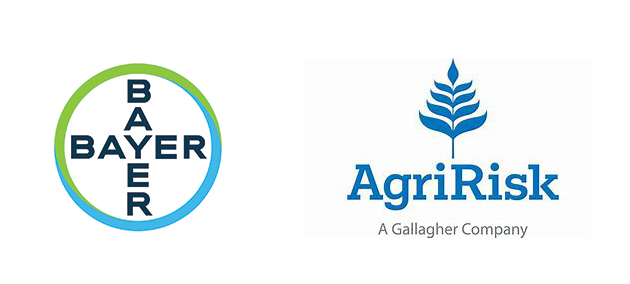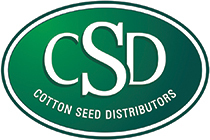Finalists for both the 2025 Bayer Cotton Grower of the Year award and the AgriRisk High Achiever of the year award.

Thomas and Julia Eather, Bellevue Pastoral Company, NSW
Thomas Eather and his sister Julia are now taking on leading roles in their family’s farming business in Narrabri and the Riverina.
Their great grandfather was a sheep farmer, and the family moved into cotton more than 30 years ago when Warren and Darren Eather (Thomas’s grandfather and father) started growing cotton on a small block at Bellevue. What began as 400 hectares has grown to 2,400 hectares across all farms, reflecting the family’s strong growth mindset.
Early yields were around 5 bales per hectare—now they regularly reach 15, a threefold increase over three decades. Read more.
Farm facts
- Total area of farm: 6000 ha
- Area to Cotton: 1500 ha (Irrigated: 1000, Dryland: 500)
- Average yield last season: 13 bales/ha
Thomas Popp, RMI ‘Springfield’, Qld
Thomas Popp has worked full-time for Carrington Cotton since 1997, with cotton remaining central to his farming career. At RMI ‘Springfield’, the focus is on innovation to support long-term business and industry sustainability.
Workforce remains the biggest challenge for the family-owned operation, though many senior staff have been with the business for over 15 years.
RMI aims to improve production and input efficiency through practices like integrated pest management using softer chemistry, ongoing crop nutrition trials, and precision fertiliser application. Read more.
Farm facts
- Total area of farm: 1100 ha
- Area to Cotton: 432.4 ha irrigated
- Average yield last season: 12.12 b/ha
Matt Richards, RDS Farming, Qld
Matt Richards farms at Nobby on the southern Darling Downs with his wife Emma and father Alan, who was known for his innovative approach and machinery design. The family has long grown onions, sorghum, wheat and barley, but three years ago decided to branch into cotton—despite it being uncommon in their area.
Motivated by weed challenges and a desire to diversify, Matt sought advice and planted their first cotton crop. It was a tough start, with the crop hit by frost just days after planting.
Always looking to improve, they use drones for spraying and to stay ahead of weather events and defoliation timing, helping drive efficiency across the farm. Read more.
Farm facts
- Total area of farm: 600 ha
- Area to Cotton: 70 ha irrigated
- Average yield last season: 12.6 b/ha this season
Tyson Armitage, Wamara, Qld
Tyson Armitage runs Wamara near Cecil Plains, where he’s growing 230 hectares of irrigated cotton this season. His focus is on improving efficiency—reducing inputs like water, nutrition and labour while maintaining productivity.
One of Wamara’s key achievements has been in integrated pest management, having sprayed just once in the past three seasons. Water efficiency has also been a long-term focus, with significant savings achieved over the past six years. In-crop watering has been reduced to just two irrigations, using around 1.7 to 2 megalitres per hectare. Read more.
Farm facts
- Total area of farm: 570 ha
- Area to Cotton: 300 ha irrigated
- Average yield last season: 11.5 b/ha this season
Hugh and Jock Brownhill, Merrilong Agricultural Company, Spring Ridge NSW
Hugh and Jock Brownhill are directors of Merrilong Agricultural Company at Spring Ridge on the Liverpool Plains, where they grow 1,200 hectares of dryland cotton and 320 hectares of irrigated cotton with a team of 13 full-time staff.
They draw on decades of family experience while taking the lead on high-level decisions. Strong teamwork is central to their operation, with a focus on open communication and shared goals.
Good seasonal timing, support from their team and favourable conditions help them stay on track to grow better and better yields every year. Read more.
Farm facts
- Total area of farm: 7249
- Area to Cotton: 1077ha (Dryland: 750ha, Irrigated: 327ha)
- Average yield last season: 12b/ha
Cotton Seed Distributors Researcher of the Year
Dr. Katie Broughton, CSIRO
Dr. Katie Broughton is a research scientist at CSIRO Agriculture and Food in Narrabri, NSW, Australia. Her world leading research has focussed on understanding the impacts of climate change on cotton production and developing sustainable agronomic practices. Currently she leads projects that explore innovative solutions, such as the use of novel plant growth hormones, to enhance cotton yield and resilience. Her work not only contributes to scientific knowledge but also provides practical strategies for farmers to adapt to environmental challenges.
Lou Gall, CottonInfo Technical Lead
Lou Gall has been involved in the cotton industry since 1990 and is the current CottonInfo Technical Lead and Executive Officer for Gwydir Valley Irrigator Association. Lou led the irrigation extension program to improve on farm water use efficiency by extending the latest research and demonstrating irrigation technologies, automation and designs. Working closely with CRDC researchers, research organisations, irrigation designers and engineers, Lou continues to play an important role developing campaigns, workshops, field days and research forums to deliver irrigation information.
Dr Murray Sharman, QLD Department of Agriculture and Fisheries
Dr Murray Sharman is the Principal Plant Pathologist (Virology) at the QLD Department of Agriculture and Fisheries. He oversees national virology diagnostics and research and plays a crucial role in biosecurity preparedness for viruses that may affect the cotton industry. One example is Cotton Bunchy Top Virus (CBTV) where Murray’s work has greatly advanced the understanding of the issue in cotton. In collaboration with the CSIRO, he identified new hosts and two genetically distinct strains of CBTV in Australia, leading to new cotton varieties being released for commercial production that have resistance to CBTV.

